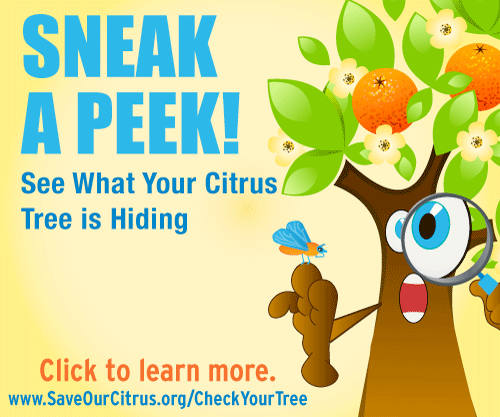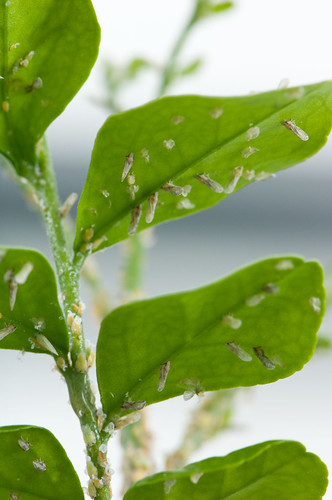
Do you have a citrus tree in your backyard? From afar it may look fine, but when was the last time you took a close look? Your tree could be hiding all kinds of clues about its health. Here are a few resources to hone your citrus sleuth skills!
Checking your citrus tree regularly is extremely important to prevent the spread of citrus disease. Four serious citrus diseases found in the United States include: Huanglongbing (also known as citrus greening or HLB for short), citrus canker, citrus black spot and sweet orange scab. These diseases are a threat to the health of U.S. citrus, and finding them early is critical. That’s why we need your help!
New Tool to Help You Check Your Citrus Tree for Disease
Being a citrus detective is quite simple. First, visit our new on-line interactive tree checking tool: http://saveourcitrus.org/check-your-tree. You can click on the tree leaves, fruit and other items on the page to quickly learn the symptoms of each of the four diseases. We also have a fact sheet you can download.
Inspect your tree thoroughly, being sure to look at the fruit and the leaves. If your tree is tall, you may want a ladder or binoculars to get a close look. Keep your eye open for one tiny pest, the Asian citrus psyllid. This little bug is about the size of an aphid and can be hard to spot. This pest spreads Huanglongbing. It likes to hide within leaves, especially tiny new leaves.
Sometimes other symptoms besides citrus disease can make your tree look unhealthy. Perhaps your tree has been overwatered, which can cause the leaves to curl and look yellow. Or maybe a nutrient deficiency is causing your leaves to look discolored. If you are not sure if your citrus issues are caused by a disease or environmental factor, check out our leaf diagnosis page.
Report It!
If you find something that looks suspicious, please report it! It’s easy to report suspected citrus disease using our website, the free Save Our Citrus iPhone app, or by contacting your USDA State Plant Health Director’s office at http://1.usa.gov/1tYZbsb. Even if you are not sure, it’s better to report it and have the symptoms reviewed by citrus experts. We appreciate your help in preventing the spread of citrus disease and keeping our nation’s citrus healthy!
Get the latest updates; follow us on Facebook and Twitter.

